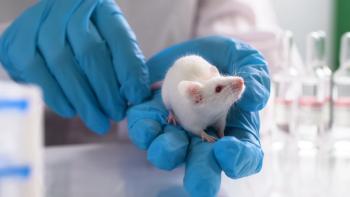
Venomous arthropods (Proceedings)
Many bites and stings inflicted by venomous arthropods (arachnids and hymenoptera) are poorly understood.
Many bites and stings inflicted by venomous arthropods (arachnids and hymenoptera) are poorly understood. Medical management of these envenomations can be difficult and information not readily available.
The primary Hymenoptera of medical concern are the bees, wasp and ants. In humans the majority of fatalities from animal interaction come from the members of this class. Often deaths are induced by anaphylactic reactions to the venom.
The primary arachnids we are concerned with in veterinary medicine are the spiders (Black Widows and Brown Recluse); in North America scorpion stings are not medically significant in dogs and cats.
Hymenoptera:
BEES: (Bumble bees – Bombus sonorous); (Honey bees – Apis mellifera)
Bees are social insects and live in colonies, bumble bee hives usually are comprised of 200 or so members and can be contrasted with honey bee nest with over 100,000 members. The members of the hive will aggressively defend the nest as a group. Aggression is usually triggered by CO2 and the bees attack dark colors. The initial attackers release an alarm pheromone when they sting which attracts the other members of the hive. The major difference between honey bees and so called African "killer" bees is not related to venom but rather aggressiveness, these bees will pursue for extended distances (often in the kilometer range) and are stimulated into an aggressive state quicker.
The venom of bees is delivered by a stinging apparatus which is detached from the body, killing the bee. The smooth muscle of the venom sac injects the venom rapidly with 90% of the venom released within 20 seconds and 100% in less than a minute. The alarm pheromone is released at the same time.
The major venom fractions consist of peptides, proteins and enzymes. The main peptides/proteins are peptide 401, apamin and melittin. The primary enzymes are phospholipase A2 and hyaluronidase.
Primary Bee Venom Fractions And Actions
Local clinical signs include a weal with a central red spot, edema, pruritis, pain and the stinger may still be embedded. Systemic clinical signs generally depend upon number of stings received. Allergic deaths require a single sting; however multiple stings have resulted in reports in man of acute renal failure, rhabdomyolysis, optic neuritis, atrial flutter/defibrillation, hepatic dysfunction, disseminated intravascular coagulation and marked respiratory distress.
Number Of Stings Per Kilo Body Weight - Dogs
Generally first aid recommendations are to immobilize the affected limb and if necessary use an epinephrine kit while in transit to veterinary facility. Most deaths occur within one hour highlighting the need to aggressively stabilize the patient and rapidly transport to a critical care facility. Once hospitalized primarily supportive care should be instituted. Medical response to allergic reactions may include epinephrine, glucagons, volume support, type 1 & 2 antihistamines, albuterol and possibly corticosteroids??
WASP: (Yellow jackets – Vespula sp., Dilichovespula sp., Vespa sp. ; Paper wasp – Polistes sp.)
These hymenoptera may be aggressive alone or in conjunction with the hive. Generally hive numbers are lower than bees. Venom delivery is accomplished by stinging, however these species do not have barbed stingers allowing multiple stings from a single wasp.
The major venom fractions include enzymes such as phospholipase, hyaluronidase and cholinesterases; peptides such as mastoparans; and amines.
Primary Wasp Venom Fractions And Effects
Local clinical signs would include redness, edema, erythema and pruritis. These local signs can persist for several days. Systemic clinical signs can include anaphylaxis, hemolysis/coagulopathy, acute renal failure, encephalopathy, hepatotoxicity, optic neuritis, hyperkalemia, and rhabdomyolysis. First aid is the same as with bee stings, stabilize and transport. Remember the key to first aid is to do no additional harm. Medical management is same as with victims of bee envenomations.
ANTS: (Harvester - Pogonomyrmex sp.; Fire – Solenopsis invicta)
Ants are colonial and have the most active venoms of the hymenoptera. Attacks by multiple members of the colony are possible if the victim is near the nest. Venom delivery is executed with the ant biting the victim then stinging to inject venom. Ants can inject venom up to twenty times with a single bite and sting scenario before exhausting their venom supply.
The major venom fractions depend upon the species involved. Field ant venom is high in formic acid. Fire ant venom is a necrotizing alkaloid. Harvester ant venom contains hemolysin, phospholipase A2 & B, neurotoxin, hyaluronidase and an acid phosphatase.
Primary Ant Venom Effects
Local clinical signs are primarily dermatologic within 1 – 3 minutes a wheal and flare, by 20 minutes vesicles filled with clear fluid develop and mature into pustules in 12 to 24 hours. Pustules may rupture causing an ulcer and scar. These local lesions are accompanied by intense pruritis, some pustules may last 2 to 3 weeks. The pustules are sterile and should not be broken open. Systemic clinical signs are more common with Fire ant stings with approximately 1 to 2% pf victims exhibiting them. These systemic clinical signs include seizures, disseminated intravascular coagulopathy, and rhabodomyolysis and mononeuritis monoplex.
Unfortunately there is no good first aid or medical treatments allergic reactions should be treated as with other hymenoptera. Generally care is supportive and the use of multiple medications has been advocated including topical corticosteroids, antihistamines and camphor.
Arachinids:
Black Or Red Widow Spider: (Latrodectus Sp)
Manifestations of Black Widow Spider envenomations vary with the species of the victim and volume of venom injected. Venom is delivered from bilateral venom glands using striated muscle through biting fangs, 15% of bites are "dry" with no venom injected.
The venom is a potent neurotoxin with seven distinct electrophoretic bands. The primary mammalian toxic fraction is α-latrotoxin which induces the release of neurotransmitters from nerve terminals. This is accomplished by toxin binding irreversibly with the lipid bilayer of cell membranes producing a cation selective channel and interference with endocytosis of vesicle membranes. Usually this occurs specifically to presynaptic areas but is independent of the neurotransmitter involved. The net effect is a massive release of acetylcholine, norepinephrine, dopamine, glutamate and enkephalins.
Since the bite site puncture wounds are so small and veterinary patients usually have heavy hair coats diagnosis of Widow Spider bites is difficult. There is no significant local tissue reaction. Diagnosis is usually dependant upon onset of systemic clinical signs.
Systemic clinical signs vary with the species bitten. Dogs exhibit regional numbness, tenderness in lymph nodes, progressive muscle pain, and fasciculations with cramping of large muscle masses. The hallmark sign is abdominal rigidity without tenderness. This is a painful condition and the victim may exhibit extreme restlessness. Often this envenomation syndrome progresses to develop hypertension and tachycardia. Seizures and paralysis are possible sequela and death may occur.
Cats are much more susceptible to the venom with paralytic signs occurring early. Severe pain is accompanied with howling and crying. Excessive salivation and restlessness are common. Vomiting and diarrhea, muscle tremors, cramping ataxia and eventual muscle paralysis occur. Death is common.
First aid is essentially of no value in treating Latrodectus envenomation.
Treatment can be approached in one of two methods. The least effective approach is to supply supportive care and attempt to relieve clinical signs. The patient should be hospitalized and monitored since the progression of the envenomation can mature over several hours. Administration of 10% calcium gluconate (10 to 30 ml dog or 5 to 15 ml cat), slowly infused intravenously may abate muscle cramping and fasciculations. Calcium infusions can be repeated at 4 to 6 hour intervals. If calcium infusion fails to maintain the patient for more than 1 1/2 hours additional infusions are not likely to be effective. Keep in mind that calcium infusions generally do not address the hypertensive crisis. Calcium infusions are not without their own inherent risk, heart rate and rhythm should be carefully monitored.
The hypertensive crisis inhibits the amount and rate of intravenous fluid administration. Pain may be managed with benzodiazepines or intravenous narcotics. There is risk of respiratory depression from the venom; this can be further depressed with some pain medications.
The most effective treatment is the administration of Black Widow antivenin (Lyovac [Latrodectus] antivenin, equine origin - Merck, Sharpe and Dohme). This product has a relatively low cost and is extremely effective. It should be given slowly intravenously. Allergic reactions are possible and the practitioner should be prepared to respond should they arise. The product acts rapidly with resolution of clinical signs within 30 minutes. A single vial usually suffices. Occasionally another vial is needed usually several hours later if clinical signs begin to recur.
Brown Recluse Spider: (Loxosceles Sp.)
These spiders are reclusive and generally not aggressive. Bites occur when the spider gets trapped against the victim, often in bedding.
The venom contains 8 major and 4 minor protein bands electrophoretically. Venom fractions include hyaluronidase, esterase, alkaline phosphatase, lipase, 5'ribonucleotide phosphorylase, and sphingomylelinase D.
Brown Spider Venom Actions
The lesion presented to the veterinarian after envenomation from a Brown Recluse spider is usually several days old and is manifest as an indolent cutaneous ulcer. There are minimal early clinical signs usually only pain and stinging for the first few hours followed by pruritus. Over the next few days the ulcer develops as a "target lesion".
Loxosceles species are known for there potent and enduring dermonecrotic effects, which results from a complex venom of necrotizing enzymes and other proteins. These lesions can persist for months without treatment. Systemic involvement can occur as a result of the enzyme sphingomylenase D and are seen as hemolytic anemia, fever, chills, nausea, arthalgias and hemoglobinuria. In humans, fatalities can occur in those victims exhibiting systemic manifestations of envenomation.
Differential diagnosis would include bacterial infections, decubitus ulcer, burn, embolism, thrombosis, direct trauma, vasculitis, lymes disease and pyoderma gangrenosum.
Mild local envenomation usually will respond to topical cool compresses. There is no specific antidote. Successful medical management has been achieved with the use of Dapsone, a leukocyte inhibitor at a dosage of 1 mg/kg tid for 10 days. The ulcer then usually heals as an open wound; treatment may need to be repeated. If Dapsone is not used antibiotics are recommended.
Wound healing has anecdotally been reported to be accelerated with the use of hyperbaric oxygen, 10 to 15 minutes twice daily for 4 days.
Newsletter
From exam room tips to practice management insights, get trusted veterinary news delivered straight to your inbox—subscribe to dvm360.






